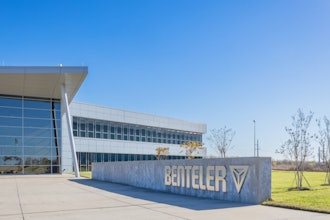Seals for food and beverage processing equipment play vital roles in protecting bearings and lubricants. From the perspective of managing lubrication, a seal’s primary purpose will be to retain lubricant in the system and keep contaminants from degrading or otherwise harming the grease.
Wherever there are bearings in rotating machinery, there are seals. Should seals become damaged or otherwise compromised, contaminants (solid or liquid) can find openings to invade both the lubricant and bearings — leading to potentially dire consequences impacting both the cleanliness and integrity of the lubricant and the life of the bearing. And, while less likely, when lubricant is lost due to seal failure, dry-running operation can lead to premature and rapid failure of bearings and, in turn, the equipment.
Proper seals and sealing systems ultimately can help operations in managing the effectiveness and integrity of machinery lubrication and promote increased line availability, improved efficiency, reduced maintenance costs and enhanced food safety of end products.
The process of selecting seals to protect bearing arrangements and enable lubricants to perform as intended will be governed by the application’s particular parameters and operating environment. Seals should be appropriate for the operating conditions (such as shaft speed, shaft material, temperature, pressure differential across the seal and other factors) and should be designed to prevent entry of all types of contaminants.
Seals can be engineered from a wide variety of standard (or specialty custom) materials. For food and beverage processing operations, FDA-compliant sealing systems offering especially efficient lubricant protection have been developed for suitability in very high temperature or very low temperature applications. Typical materials making the grade include fluorocarbon, PTFE or advanced food-grade quality elastomers.
The following examples of sealing applications and solutions can open a window into the possibilities for food and beverage processing operations:
- Meat processing. This often involves fast-moving cutters and spindles, and to keep the processed product in place and to prevent contamination, sealing systems must perform at high sliding speeds combined with high pressure. Special rotary seals have been designed to meet these requirements. In addition to tightness of the fit, such seals will resist media and abrasion. All these benefits offer a recipe for success in lubrication management.
- High-pressure pasteurization. This is a common way to reduce the use of temperature during food processing — resulting in less spoilage and increased food safety without affecting the original flavor characteristics. To implement the process, high-pressure systems (up to 5,000 bar) are necessary and the sealing system becomes a critical consideration (applying to static seals for the tank and to the dynamic seals for the pressurizing system). A specially designed sealing element for this extremely high-pressure situation integrates back-up rings made of stainless steel and bronze to compensate for the irregularities of housing configurations. By withstanding the effects of high pressure, seals remain intact and lubricant remains unaffected.
- Waffle production. Baking tins give the waffles their specific shape and, unlike a typical household unit, pressurized injection systems requiring special seals are engaged to force the dough into the tins. The seal must accommodate a combination of heat resistance, thermal expansion and injection pressure — and both the seal design and material come into play. The use of silicone rubber (replacing standard PTFE) and adoption of high seal-compression characteristics have been shown to eliminate the adverse influence of thermal expansion during the baking process. The softness of the material further serves to protect the seal from mechanical damage during manipulation and cleaning of the tins — and a protected seal is a seal that retains lubricant as intended and advances the cause of best practices in lubrication management.
The proper specification of seals (from design to material) will determine how — and whether — a sealing system performs a primary function of retaining lubricant and helping to keep equipment up and running, regardless of conditions. Ultimately, sealing systems represent a first line of defense toward optimized lubrication management for the good of machine reliability and uptime.
Bryan A. Ogden oversees Business Development-Food & Beverage for SKF USA Inc. Phone: 267-436-6509. Fax: 267-436-6026. email: [email protected] Website: www.skfusa.com.























